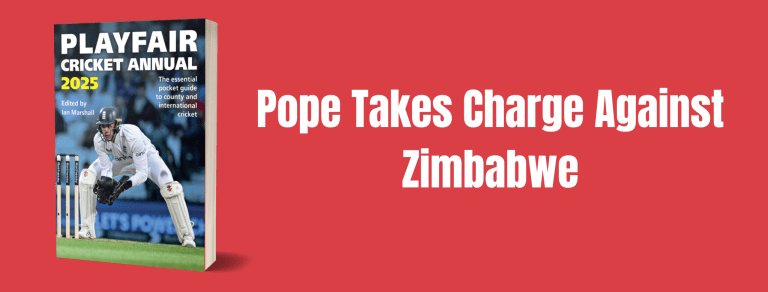Billings and Narine Prove Invincible

Having been unable to watch much of the first-ever official Hundred fixture, which ended in a narrow win for the women’s Oval Invincibles side over the Manchester Originals at The Oval, I was able to tune in from the start to see the inaugural men’s equivalent 24 hours later. The Invincibles batted first, and I decided to follow the BBC’s coverage for the first innings and Sky’s for the second.
With a largely positive response to yesterday’s game, and a much bigger crowd this time (The Oval was perhaps three-quarters full, with 18,000 in), there was plenty of excitement among the BBC team. Isa Guha, Phil Tufnell and Michael Vaughan were in the commentary box, while James Anderson and Tymal Mills were roving reporters, regularly being brought in for their insights. The Oval itself was heavily branded for the Hundred, and the match began with a brief display of fireworks.
One new TV feature was that Jason Roy came out to bat with a camera in his helmet so the viewer had an overhead view as he took his guard, but that was just one of two shots it provided. He was joined at the crease by Sam Curran, who hit his second ball from Tom Hartley for six, only for Hartley to hit back with a 66mph arm ball that bowled him. Such was his control that Hartley was given a second consecutive five-ball spell in the first ten-ball stint at one end. Roy looked in fine form until he was brilliantly caught by Tom Lammonby in the deep.
The TV screen, with the total rising up on the left in green and the balls rising on the right in fuschia pink, wasn’t immediately easy to understand for anyone used to a normal scorecard, but perhaps worked for those new to it all. At the bottom, the two batsmen were displayed on the left, with the one on strike on top and in larger type while the non-striker was below him and smaller; runs scored and balls faced were given for both. The bowler, in fuschia, had his balls, runs conceded and wickets listed. Every six was accompanied by all sorts of onscreen graphics.
Meanwhile, the commentators tried hard not to mention ‘overs’, but often forgot; they did find plenty else to talk about beyond the game; the style was chatty. To take us further away from cricket, someone called Chris Hughes, who was apparently a ‘star’ on Love Island, was sent into the crowd to ask them about whether they were excited by the Hundred. Fortunately they said they were, or that might have been awkward, given all the cheerleading taking place. Hughes had found four young men to talk to, clutching their drinks. How different this was to a normal T20 demographic wasn’t immediately clear.
With the Invincibles going well at 80 for four after 55 balls, the Originals called a time-out to regroup as Sam Billings began to cut loose. One good innovation in the Hundred is the time limit on the bowling side, who have to get to the start of the final five balls by a set time, or else suffer having to bring one extra fielder within the circle at the death. After 61 balls, the win predictor was wheeled out for the first time, and it showed the Invincibles with a 54% chance of victory. The BBC also felt it was necessary to explain what a bouncer was – not perhaps cricket’s most obscure term.
Billings fell for 49 after 30 balls, falling one short of becoming the first man to make a fifty in the Hundred. His fellow batsmen, however, had looked a bit frenetic and with 11 balls left the Invincibles were eight down. Hartley finished the game off, bowling very impressively to keep the score to 145 for eight. Between innings, Jack Garratt performed, another innovation for this format.
On Sky Sports, Nasser Hussain and Ebony Rainford-Brent were on comms as Phil Salt and Jos Buttler came in to bat, facing up to Sam Curran. Nasser also stumbled on the over/balls issue, but Curran struck early with a slower ball that deceived Salt and was trusted to bowl ten balls straight off. As one of the ‘quirky’ features, there was soon a moment where various Invincibles players were asked to interpret cockney rhyming slang; Billings found this trickier than most, to no one’s huge surprise.
After 30 balls, Sky changed their comms team, bringing in Dinesh Karthik and Rob Key, before Sunil Narine had the strike-starved Buttler caught. Interestingly, while BBC had called the Invincibles score as being par, Sky felt they had needed more. With 60 balls left, the Originals needed 96. The next ball produced a wicket, and the hosts were up to 78% on the win predictor, which seemed about right. Karthik kept on repeating that there was a full house despite the number of empty seats, but there may have been Covid restrictions on numbers. At the halfway point, the Originals still needed 88 runs, and Carlos Brathwaite was looking anything but a man who once hit four consecutive sixes to win a World Cup final.
The final 30 balls were covered by Nasser and Stuart Broad, with the Originals needing to score two a ball. With ten balls remaining and 26 runs needed, the Invincibles had a strategic time-out, but the outcome looked pretty obvious by then. With five balls to go and 19 wanted, Sam Curran put one right in the slot for Brathwaite, but he hit it up to Roy and so the Originals finished on 136 for seven to lose by 9 runs.
What to make of it all? A good crowd was clearly behind the home side, even though they featured the likes of Middlesex’s Nathan Sowter in their line-up, but the atmosphere was encouraging rather than electric. There was a definite sense of occasion, if not a feeling that the crowd overly cared about the outcome. At this point, that is to be expected as the teams have no heritage, so we will see how fans begin to get behind their franchise, or to start to buy team shirts in good quantities. There didn’t appear to be a noticeably different demographic in the crowd compared to the Blast, but I am sure we will be shown evidence to prove that it was.
The game itself, with umpires waving a little white card after five balls in each ten-ball stint from one end, was not especially different to a T20 match, though the option of a bowler delivering ten balls consecutively certainly allows for the bowling side to maintain their control for longer if they get on top. Spin proved just as effective as it has been in T20, while the batting was even more breathless. The quality of the sides, admittedly slightly hampered by Covid withdrawals, was perhaps a step up from what you would see from a Blast side, but probably not two steps up. And if the Blast went for a first and second division, the gap would be almost negligible from a first division side.
Around the game, with music during the innings break, fireworks before it started, and one or two other attempts at razzmatazz, there were definite signs that more effort had been put in to make the match into an occasion. Both TV commentary teams worked very hard – too hard to my taste – to reinforce that sense that this was something really special.
So, if (unlike Michael Holding) you enjoy T20 cricket, there was certainly nothing here that felt embarrassing to call cricket. But at the same time you have to wonder whether all the money that has been thrown at the Hundred was really justified. It was hard to see what would make you like this, if you couldn’t cope with T20. Could the money spent on this not have been used to make the Blast even better instead? Sports fans enjoy their sport but love their team over a lifetime. Abandoning those established teams to create a slightly different version of the game played by sides no one knows seems a really high-risk strategy. As Anderson commented, seeing Saqib Mahmood lining up against Manchester Originals didn’t feel right.
I have been consistently sceptical about the Hundred. Now I have watched one game, I don’t feel I need to experience it again, though I won’t mind doing so. It’s certainly not terrible; it has brought forward one very good idea (penalising slow over rates) and an intriguing one (doubling the length of an ‘over’ if bowlers want to). But that has been achieved at a big cost: the rhythm of the season has yet again been disrupted. Most seriously, the 50-over game – the version where England are currently world champions – has been marginalised, with so many players seconded to the Hundred. The LV= County Championship has been shunted to the margins of the season. The Blast, which has continued to grow in popularity, is now the second-priority short format of the game. Sponsors of all three existing formats must feel sidelined. And cricket now has four versions of the game to promote, and the fact that three of them are white-ball formats can only diminish England’s Test future.
So the ECB has put its eggs in the Hundred basket, a format yet to exist anywhere else, at the cost of the three formats played globally. The key benefit of returning the game to terrestrial TV has to deliver huge returns for cricket as a whole, if the risks to the established formats turn out to be costly. Any satisfaction with the on-pitch product needs to be put in a much wider context, and it is there that the questions will linger for some while to come.






